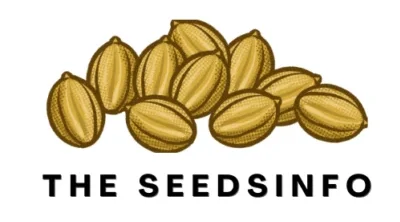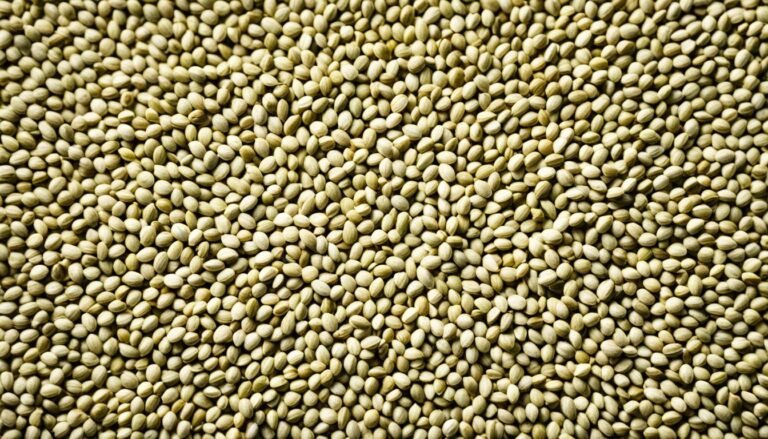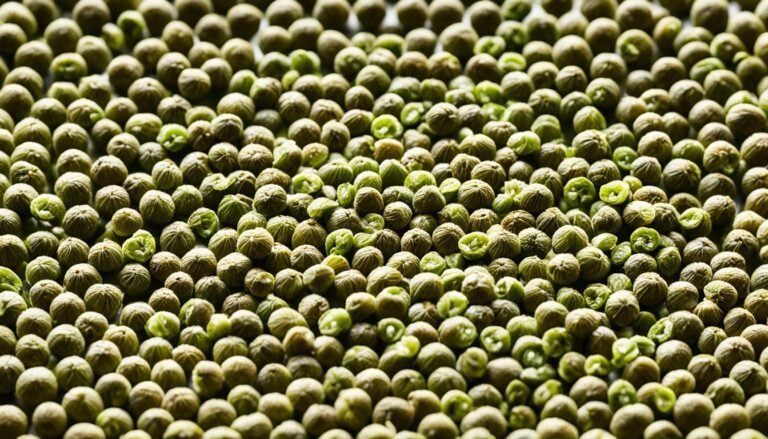Myths and Facts About Poppy Seeds: Truth Revealed

Did you know a single poppy flower can have up to 6 petals? This fact is just the start of the interesting myths and truths about poppy seeds. They are often misunderstood, from causing false drug tests to being nutritious. We’ll clear up the confusion and share the real story of poppy seeds.
If you love cooking, care about health, or just want to learn more, you’re in for a treat. We’ll look at poppy seeds’ history, debunk old myths, and highlight their nutritional benefits. By the end, you’ll see poppy seeds in a whole new light.
Introduction to Poppy Seeds
Historical Cultivation and Uses
Poppy seeds have a long history, dating back thousands of years to the opium poppy plant, Papaver somniferum. The opium poppy is famous for its psychoactive properties. But the seeds are valued for their many uses, from cooking to medicine.
Poppy seeds are grown on a large scale in Europe and parts of the Middle East. They have been used for centuries, showing up in ancient civilizations. Poppy seeds are a key ingredient in traditional baked goods and specialty oils, playing a big role in many cultures.
Even though they come from the opium poppy, poppy seeds don’t have much opium. This fact has made them widely accepted for food and non-food uses. Today, countries like Turkey, the Czech Republic, and Spain are big producers of poppy seeds.
| Poppy Seed Cultivation and Production | Global Statistics |
|---|---|
| Top Producing Countries | Turkey (35%), Czech Republic, Spain |
| Annual Global Production | 76,240 tonnes (2018) |
| Nutritional Value (per 100g) | 525 calories, 28% carbohydrates, 42% fat, 21% protein |
| Poppy Seed Paste (per 30g serving) | 120 calories, 4.5g fat, 2g protein |
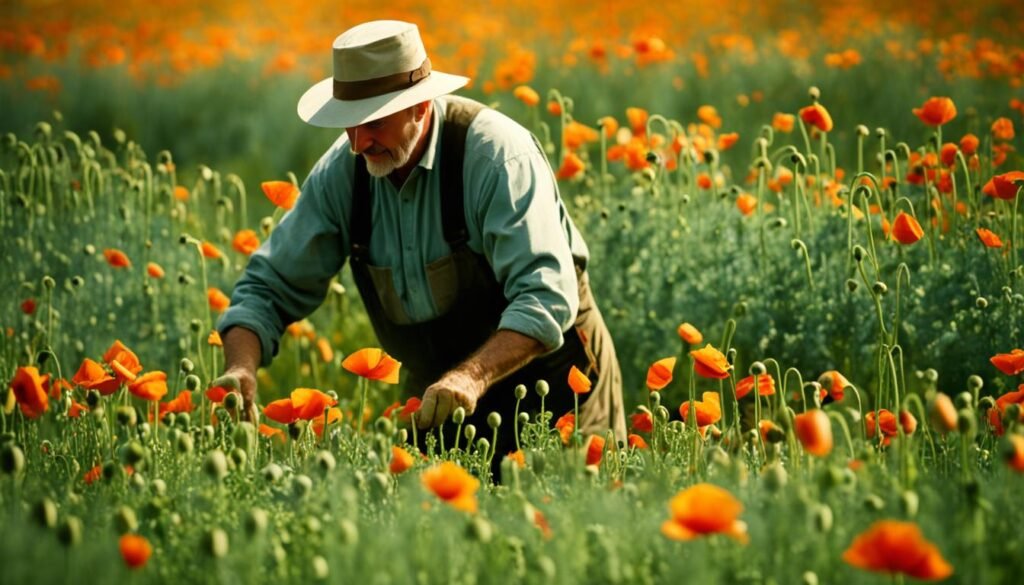
Poppy seeds have a rich history, deeply rooted in many cultures. From ancient times to today, they’ve been used in both food and medicine. These versatile seeds continue to fascinate and inspire people worldwide.
Myths about Poppy Seeds
Poppy seeds have many myths and misconceptions. People think all poppy seeds have opiates and can cause positive drug tests. These beliefs often lead to confusion and wrong information about this ingredient.
Many believe that eating poppy seeds can lead to a positive drug test. It’s true that poppy seeds have small amounts of opiates like morphine and codeine. But, these amounts are usually too low to show up on a drug test. It’s more likely that other things, like drinking too much water or using synthetic urine, could cause a false positive.
- Rare occurrence of ingesting poppy seeds leading to a false positive on a drug test
- Increased creatinine levels in urine as a result of excessive water intake can flag a diluted sample during drug testing
- Synthetic urine often contains different chemicals that can be detected, resulting in the need for a repeat test
- Unlikely for secondhand smoke exposure to trigger a positive drug test due to insufficient inhalation levels
Some think all poppy seeds have opiates, but this isn’t true. The type of poppy used for food, Papaver somniferum, has low opiate levels. This makes it safe to eat. The opium poppy, on the other hand, has much more opiates.

Myths about poppy seeds come from not understanding the different poppy types and their uses. By knowing the truth, we can enjoy poppy seeds for their taste and health benefits. This also helps address concerns about drug tests and safety.
Fact: Poppy Seeds Can Cause Positive Drug Tests
Eating poppy seeds can lead to a positive drug test result. This happens because poppy seeds have trace amounts of codeine and morphine. The U.S. Department of Defense warns service members about this risk.
Codeine Contamination in Poppy Seeds
Poppy seeds don’t have opiates on their own. But, they can get contaminated with opiates during harvesting. Things like the climate and when they are harvested can change how much opiate they have. Even though these opiates are not enough to make you high, they can still cause a positive drug test.
Military and Drug Testing Policies
The U.S. military has changed its rules because of poppy seeds causing false positives. In February 2023, a memo was sent out warning service members about poppy seeds and positive urine tests for codeine. Military drug testing has different rules, and some service members have been disciplined or discharged for testing positive due to poppy seeds.
| Metric | Value |
|---|---|
| US Drug Testing Positivity Rate (2020) | 4.6% |
| Opioid-Related Overdose Deaths (2020) | 68,630 |
| Increase in Retail Sales of Oxycodone (1997-2007) | 866% |
It can be hard to tell if a positive test comes from poppy seeds or actual drug use. Drug tests often go through a medical review to check for real drug use, even if the test shows opiates from food.
“In November 1998, the Substance Abuse and Mental Health Services Administration (SAMHSA) raised the federally mandated cutoff concentration for morphine and codeine in urine from 300 ng/mL to 2,000 ng/mL to reduce false positive results due to poppy seed consumption.”
The SAMHSA has new guidelines for drug tests in the workplace. They set a 30 ng/mL cutoff for the first test and a 15 ng/mL cutoff for the second test for codeine/morphine. This helps deal with false positives from poppy seeds.
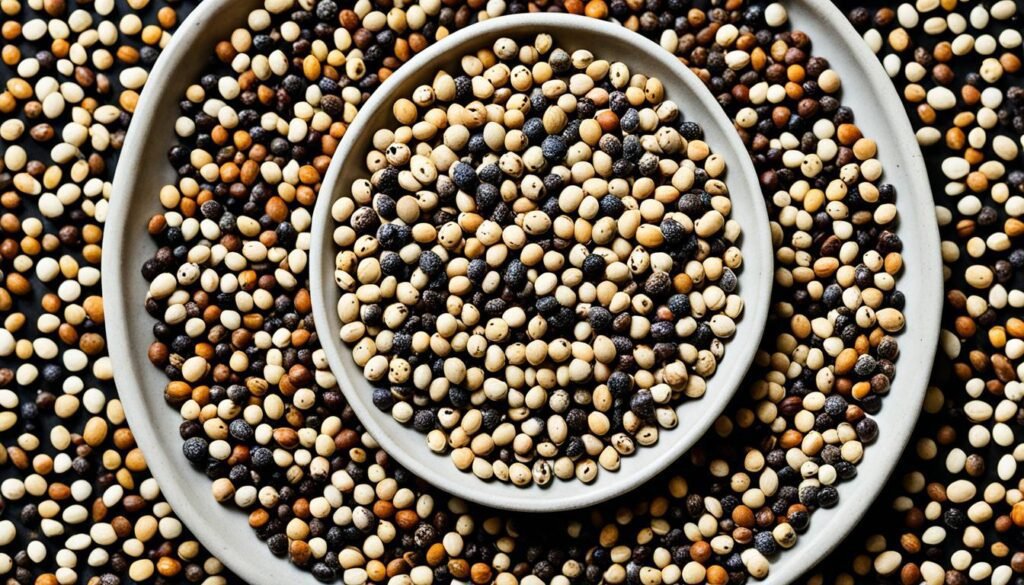
Myth: All Poppy Seeds Contain Opiates
Many think all poppy seeds have a lot of opiates like morphine and codeine. But, the “Dutch Blue” or “Breadseed” poppy seeds used in cooking have very little of these substances. These seeds are safe to eat because they are bred to have low opiate levels. The opium poppy (Papaver somniferum) has a lot of opiates, but food-grade poppy seeds are safe.
Studies show that eating poppy seeds can sometimes lead to a false positive on drug tests. A 2015 study in the Journal of Analytical Toxicology found that eating a lot of raw poppy seeds before a test could lead to a positive result. But, people didn’t like eating that much raw seed.
This study also found that poppy seeds might not affect oral fluid drug tests as much as urine tests. So, eating poppy seeds could cause a false positive in urine tests, but it’s less likely in oral fluid tests.
“Consuming a large quantity of raw poppy seeds shortly before specimen collection resulted in more positive test findings and longer detection windows, though participants found consuming this amount of raw seeds unpalatable.”
The amount of opiates in poppy seeds can change based on the type and how they are grown. The poppy seeds used in cooking have very little opiate and are safe to eat. But, if you’re sensitive or worried, talk to a doctor before eating poppy seeds.
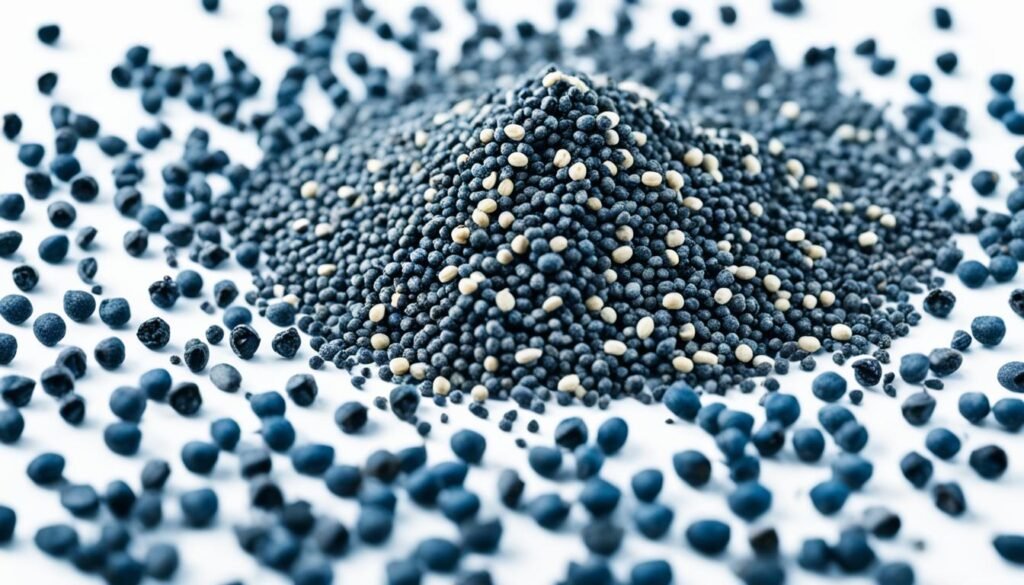
Fact: Nutritional Value of Poppy Seeds
Many think poppy seeds are not safe to eat, but they are actually very nutritious. They are packed with healthy fats, protein, fiber, vitamins, and minerals. These include calcium, iron, and zinc. Adding poppy seeds to your meals in small amounts can be good for you.
A single tablespoon of poppy seeds has 46 calories, 1.6 grams of protein, 3.7 grams of fat, 2.5 grams of carbs, and 1.7 grams of fiber. They are also full of nutrients like manganese, copper, calcium, magnesium, phosphorus, zinc, thiamine, and iron.
Poppyseed oil is full of omega-6 and omega-9 fats, along with some ALA. These fats help keep you healthy and can lower the risk of heart disease. Eating foods with unsaturated fats, like poppyseed oil, can cut the risk of heart attacks and strokes by up to 17%.
- Poppy seeds can help with digestion because of their fiber. They also protect cells from damage and illness.
- Women who use products with poppyseed oil may find it easier to get pregnant.
Even though poppy seeds are good for you, eat them in moderation. Experts say to limit raw poppy seeds to about 1 tablespoon for every 7 pounds of your weight. This helps avoid any bad side effects.
Myths and Facts About Poppy Seeds: Truth Revealed
Distinguishing Edible from Opium Poppies
When we talk about poppy seeds, knowing the difference between myth and fact is key. The opium poppy (Papaver somniferum) is where the drug comes from, but not all poppy seeds are the same. The edible poppy seeds used in baking are from a different type that has little to no drug content.
To tell edible poppy seeds from opium poppies, look at their physical traits. Opium poppies have big, bluish-green leaves and big, fancy flowers. Edible poppy seeds have smaller leaves and flowers. Also, the opium poppy’s seed pods are big and round, while edible poppy pods are small and long.
Even though edible poppy seeds have some opiates, the amounts are tiny. They’re not enough to show up on drug tests or make you feel high. Cleaning and processing the seeds removes even more opiates, making them safe for food.
| Characteristic | Opium Poppy | Edible Poppy |
|---|---|---|
| Leaf Color | Bluish-green | Lighter green |
| Flower Size | Larger, more ornate | Smaller, more delicate |
| Seed Pod Shape | Larger, more rounded | Smaller, elongated |
| Opiate Content | Higher (12% morphine) | Lower (trace amounts) |
Knowing how to spot the different poppy types helps you tell edible poppy seeds from others. This way, you can be sure about their safety and how to use them.
Legal Regulations on Poppy Seeds
The opium poppy has always been closely watched by the law. In the U.S., the Opium Poppy Control Act of 1942 was passed to manage its use. This act aimed to control the supply and distribution of opiates.
Before the Act, the U.S. relied heavily on poppy seeds from places like the Netherlands, Poland, and Danzig. In 1938, it imported nearly 4,400 metric tons. But when imports stopped during World War II, prices soared from 7 cents to 50 cents per pound.
This shortage led to a surge in poppy farming in California, especially after the war. The Opium Poppy Control Act of 1942 was then created. It allowed poppy farming only for medical and scientific uses.
The Opium Poppy Control Act
The Act made it illegal to grow opium poppies without a license. Its main goal was to reduce the amount of opiates available. This law greatly changed how people could use and get poppy seeds:
- In 1943, California farmers who planted poppies before the law were allowed to harvest their seeds.
- California also let people with good character get permits to grow opium poppies, leading to more farming in 1943.
- An investigation in California in 1941 found a farm worker growing opium poppies, thinking they made him stronger.
Today, the rules around poppy seed regulations, opium poppy control, and poppy seed laws keep changing. They aim to prevent misuse and keep these products safe.
Poppy Seed Cultivation Controversies
The growth of poppy plants has led to controversy and legal fights over time. One major event was the “California Poppy Rebellion” in the early 1940s. The government wanted to control poppy cultivation with the Opium Poppy Control Act.
The California Poppy Rebellion
In the early 1940s, California saw a rise in poppy farming for edible seeds. This led the federal government to act, worried about poppies being used in the illegal drug trade. They passed the Opium Poppy Control Act to manage poppy farming in the U.S.
But California’s poppy seed growers refused to follow the new rules. They stood up to the government, causing a big conflict known as the “California Poppy Rebellion.” This fight ended with the government’s rules winning, despite the growers’ resistance.
This event shows the ongoing debates over poppy farming, even for edible seeds. These legal issues keep affecting poppy seed farming and its rules.
“The cultivation of poppy plants, even for the production of edible seeds, has been a source of controversy and legal battles.”
Despite the hurdles, the poppy seed industry is crucial, producing over 31,000 tons in 1947 worldwide. Scientists have found Papaver somniferum and Papaver setigerum as the key poppy types with drugs controlled by international laws.
Cultural Significance of Poppy Seeds
Poppy seeds have a deep cultural and symbolic meaning, especially in ancient Greece. They were linked to gods like Demeter and Hypnos. This link to sleep, death, and fertility has spread through many cultures and art forms over time.
In the U.S., the red poppy stands for remembering those who have fought in the military. National Poppy Day is on May 25th, inspired by Major John McCrae’s poem “In Flanders’ Fields” in 1915. The Veterans of Foreign Wars started giving out poppies in 1922 before Memorial Day. Today, the American Legion Auxiliary Unit 139 in Arlington gives out 1,000 – 2,000 poppies on Memorial Day weekend.
Poppy kits with 60 poppy seed packets are sold for the Poppy Program by the U.S. World War One Centennial Commission and Veterans of Foreign Wars. The American Legion and Veterans of Foreign Wars also use poppies at funerals and events. In 2014, nearly 10 million people saw 800,000 ceramic poppy designs at the Tower of London.
The poppy’s importance goes beyond the U.S. In the UK, the first Poppy Day was in 1921 and raised three million pounds for veterans. Anna Guerin, known as the “poppy lady from France,” helped make the poppy a symbol of Remembrance. Today, millions in the UK and Commonwealth wear the red poppy brooch every year.
The poppy belongs to the Papaver genus and grows mainly in the northern hemisphere. One species is found in southern Africa. The Minoans cultivated poppies for their seeds around 2700 BCE. Poppy colors range from deep purple to red, orange, yellow, and white. Papaver orientale is a popular perennial known for its large, showy flowers.
Poppy seeds have a deep cultural meaning, from ancient Greek deities to modern symbols of remembrance. Their history and symbolism continue to fascinate and inspire people worldwide.
“In Flanders fields the poppies blow, between the crosses, row on row.”
– Major John McCrae, “In Flanders Fields”
Medicinal Uses of Opium Poppy
The opium poppy is famous for its effects on the mind, but it has also been used for medicine. In ancient Greece, people used opium for pain relief, sleep help, and more. This use of the poppy has a long and complex history.
Ancient Greek Usage of Opium
The Papaver somniferum, or opium poppy, has been around for thousands of years. It was first used in the Neolithic age. In ancient Greece, people used opium for its healing powers.
“Opium has been actively collected since around 3400 BCE, with the first known cultivation by the Sumerians in Mesopotamia. Tablets found in Nippur describe the collection of poppy juice by the Sumerians for opium production.”
The ancient Greeks knew opium helped with pain, sleep, and treating sickness. Hippocrates, the father of Western medicine, wrote about using opium. Galen, another famous Greek doctor, also explored its uses.
Opium’s use in medicine has changed over time. It has been used in many ways for different reasons. The history of opium shows how it has sparked both wonder and debate.
Conclusion
This article has looked into the complex world of poppy seeds. We’ve cleared up some common wrong ideas about their poppy seed safety and health benefits. It’s important to know the difference between the opium poppy and the ones used in cooking.
If you’re worried about poppy seed consumption and drug tests, or just want to learn more about them, this guide has you covered. It breaks down the myths and facts, helping you make better choices about poppy seeds.
As you learn more, remember to handle poppy seed consumption responsibly. Knowing the rules around this crop is key. With the right info, you can enjoy poppy seeds’ unique tastes and health perks safely. This way, you can navigate the tricky world of poppy seed myths and facts.
FAQ
Can consuming poppy seeds really cause a positive drug test?
Yes, eating poppy seeds can lead to a positive drug test result. This happens because they contain trace amounts of codeine and morphine. These are naturally found in the poppy plant.
Do all poppy seeds contain significant amounts of opiates like morphine and codeine?
No, it’s a myth that all poppy seeds have a lot of opiates. The “Dutch Blue” or “Breadseed” poppy seeds used in cooking have very little of these compounds. Only the opium poppy (Papaver somniferum) has high levels of opiates.
Are poppy seeds a nutritious food ingredient?
Yes, poppy seeds are nutritious despite what you might think. They offer healthy fats, protein, fiber, vitamins, and minerals. These include calcium, iron, and zinc.
What is the difference between the opium poppy and the varieties grown for culinary use?
The opium poppy (Papaver somniferum) has a lot of opiates like morphine and codeine. On the other hand, the poppy seeds for cooking, like the “Dutch Blue” or “Breadseed” poppy, have almost no opiates.
Are there legal regulations surrounding the cultivation and use of poppy plants?
Yes, there are strict laws and controls on the opium poppy because of its potential for misuse. For instance, the Opium Poppy Control Act of 1942 in the U.S. made it illegal to grow the opium poppy without a license.
Has the cultivation of poppy plants been a source of controversy?
Yes, growing poppy plants, even for food, has caused controversy and legal issues. In the early 1940s, California grew a lot of poppy seeds, leading to the Opium Poppy Control Act. This led to a legal battle known as the “California Poppy Rebellion”.
What is the cultural and symbolic significance of poppy seeds?
Poppy seeds have been important in many cultures and traditions. In ancient Greece, they were linked to gods like Demeter and Hypnos. Their connection to sleep, death, and fertility has been seen in art and culture for centuries.
How have the medicinal properties of the opium poppy been used throughout history?
In ancient Greece, opium from the poppy was used for pain relief, sleep, and as a drug. This shows the complex and sometimes controversial history of using the opium poppy for medicine.
